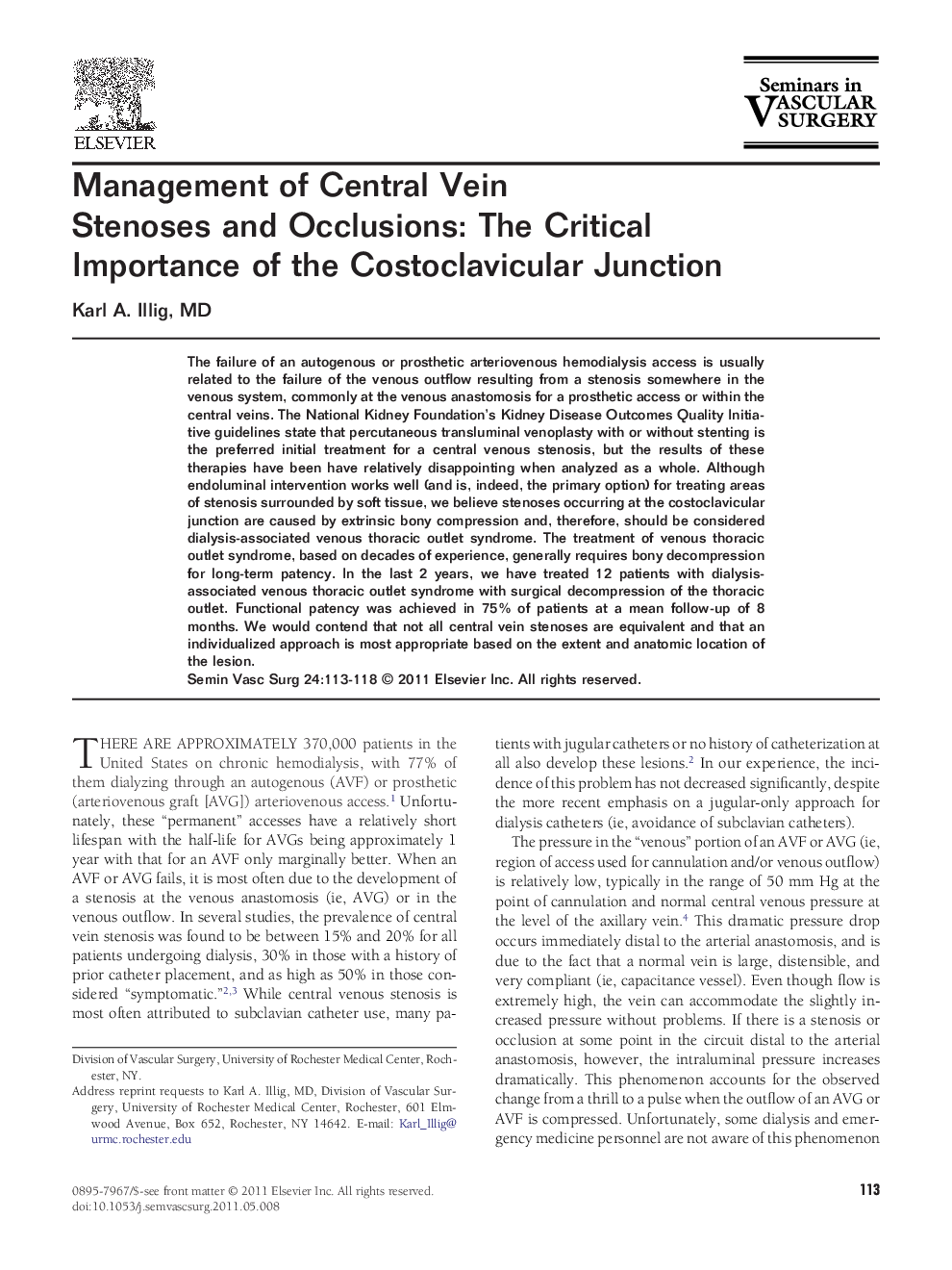| Article ID | Journal | Published Year | Pages | File Type |
|---|---|---|---|---|
| 3026219 | Seminars in Vascular Surgery | 2011 | 6 Pages |
The failure of an autogenous or prosthetic arteriovenous hemodialysis access is usually related to the failure of the venous outflow resulting from a stenosis somewhere in the venous system, commonly at the venous anastomosis for a prosthetic access or within the central veins. The National Kidney Foundation's Kidney Disease Outcomes Quality Initiative guidelines state that percutaneous transluminal venoplasty with or without stenting is the preferred initial treatment for a central venous stenosis, but the results of these therapies have been have relatively disappointing when analyzed as a whole. Although endoluminal intervention works well (and is, indeed, the primary option) for treating areas of stenosis surrounded by soft tissue, we believe stenoses occurring at the costoclavicular junction are caused by extrinsic bony compression and, therefore, should be considered dialysis-associated venous thoracic outlet syndrome. The treatment of venous thoracic outlet syndrome, based on decades of experience, generally requires bony decompression for long-term patency. In the last 2 years, we have treated 12 patients with dialysis-associated venous thoracic outlet syndrome with surgical decompression of the thoracic outlet. Functional patency was achieved in 75% of patients at a mean follow-up of 8 months. We would contend that not all central vein stenoses are equivalent and that an individualized approach is most appropriate based on the extent and anatomic location of the lesion.
